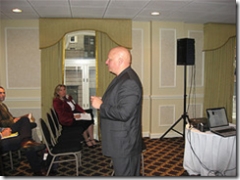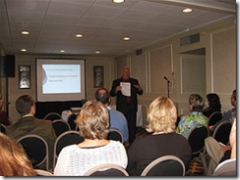 Executive Blogging: Is it worth it?
Executive Blogging: Is it worth it?
Many executives ask, “Should I blog?” In Steve Crescenzo’s experience, the right question for many of them is “Can I blog?” In fact, says Steve, many executives lack the writing skills necessary to blog.
For those who can write, the blog can be an incredibly effective tool.
In assessing whether an executive should blog, you must match the tool to the executive’s skills. If they don’t match, stay away.
Why do blogs work?
- The technology is easy and simple. Anyone can use the software without any technical knowledge.
- The conversational nature of the writing draws people in.
- The two-way conversation that springs up around the blog makes it powerful.
Having said this, many senior executives are not inclined to learn even the basic software. They are also rarely conversational in their communication. Many executives have been trained to see written communications as formal and stiff. They may be great communicators in a one to one conversation. But they stiffen up and become formal and “official” in their writing. Steve calls this the “Homicide Detective Syndrome” – the tendency to clam up and speak in “officialese” the second the cameras turn on. This doesn’t match the conversational nature of blog writing.
Executives are also prone to spin. They are reluctant to acknowledge bad news. When was the last time you read an executive statement that said, “We have a problem.” No, you’ll read, “We have a challenge.” In corporate spin, “challenge” is used as a euphemism for “problem.”
Written executive statements also relentlessly use clichés. “The only constant is change.” “Employees are our greatest asset.” “We’re uniquely positioned in our global marketplace.”
None of this works on blogs.
 So, why do executives want to blog?
So, why do executives want to blog?
- To be seen as cutting edge
- Someone else in the organization wants to be seen as cutting edge.
- They feel it’s a great way to sell the company.
Why SHOULD execs want to blog?
- They genuinely have something to say. If they don’t have something to say, they shouldn’t blog.
- They want unfiltered feedback. This is the big issue. Many execs may say they want this. But do they REALLY want unfiltered feedback or are they just saying they do?
- They are comfortable speaking in a candid, conversational fashion.
- They are passionate about the company and not afraid to show it.
- They are comfortable with the audience owning the conversation. Many executives are reluctant to give up control to the extent necessary to be a successful blogger.
Five mistakes to avoid:
- Don’t try to fake a blog – a “flog”. Don’t put forward a ghost written “executive” blog. You can help the executive develop posting ideas. You can edit it. But the exec must be responsible to write it himself.
- Don’t start it if you can’t feed it. If you start a blog, you have to generate enough material and find the time to post regularly.
- Don’t use it as a sales tool. People resent being “sold to” on a blog. You can be positive and proud of your products. But don’t use the blog as a hard sales tool.
- Don’t try to “own” the conversation. You can initiate. But then you become part of the conversation.
- Don’t underestimate the visibility you might get. Blogs transcend borders and geography.
When do you know an executive blog is working? When your executive blogger is able to say that the feedback on the blog has influenced his decision-making. And when your community becomes actively engaged with you.
Bob Lutz’s GM Fastlane blog has both of these qualities. Why does it work?
- He actually writes it.
- He pays attention to the comments.
- He doesn’t try to own it.
- He’s comfortable with the comments.
- He sees the value in interacting with the customers directly.
So, how to get started? An executive who wants to blog could start with an internal blog. This will allow her to find her voice and become comfortable with blogging before launching an external blog.
Internal blogs do not need to be open ended. Temporary blogs can be established around specific events, such as an industry conference, marketing expos, stakeholder consultations, etc. Such a “hit and run” blog enables the executive to blog for a finite period of time about a subject that she has something to talk about. When the event is over, the blog posts end.
